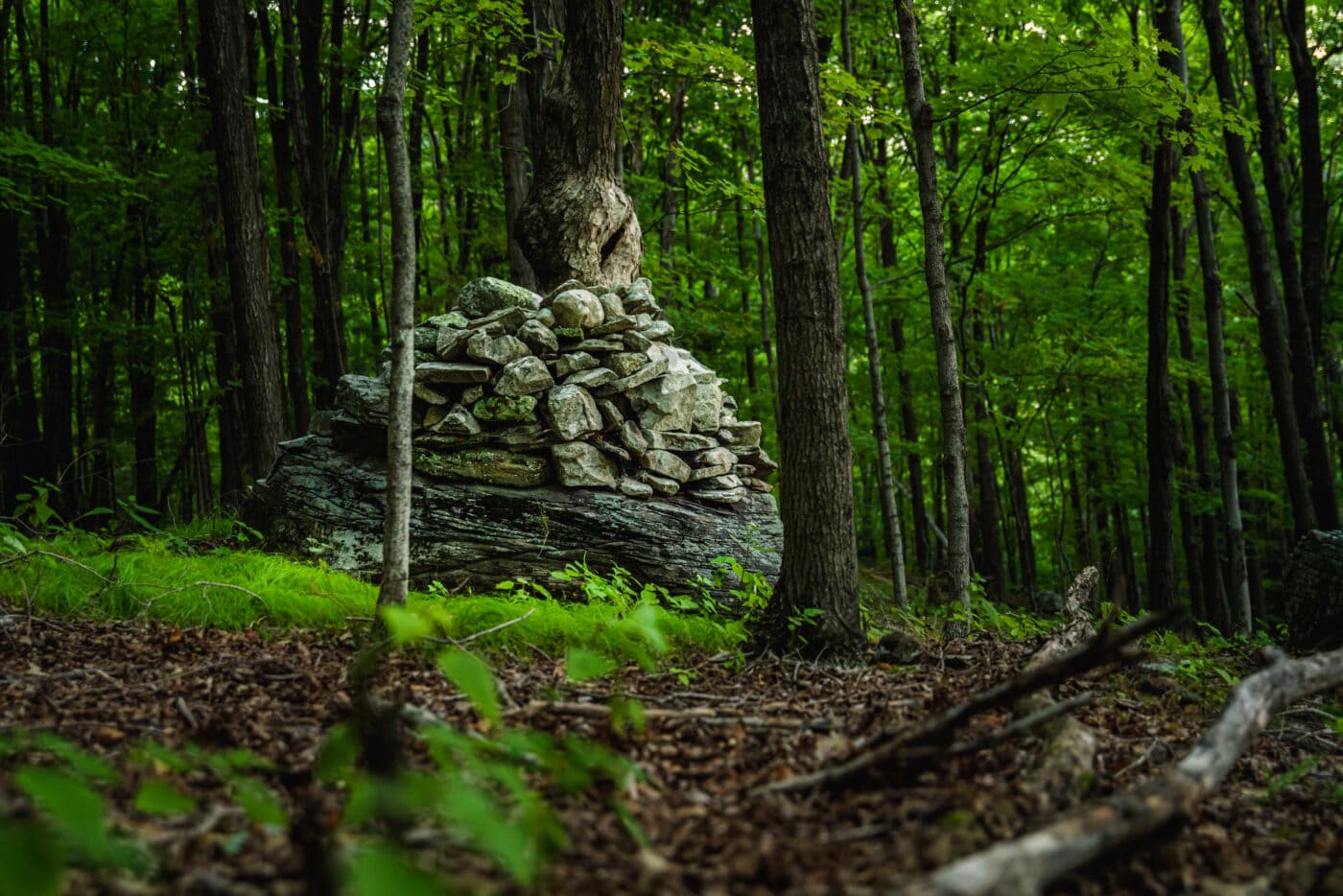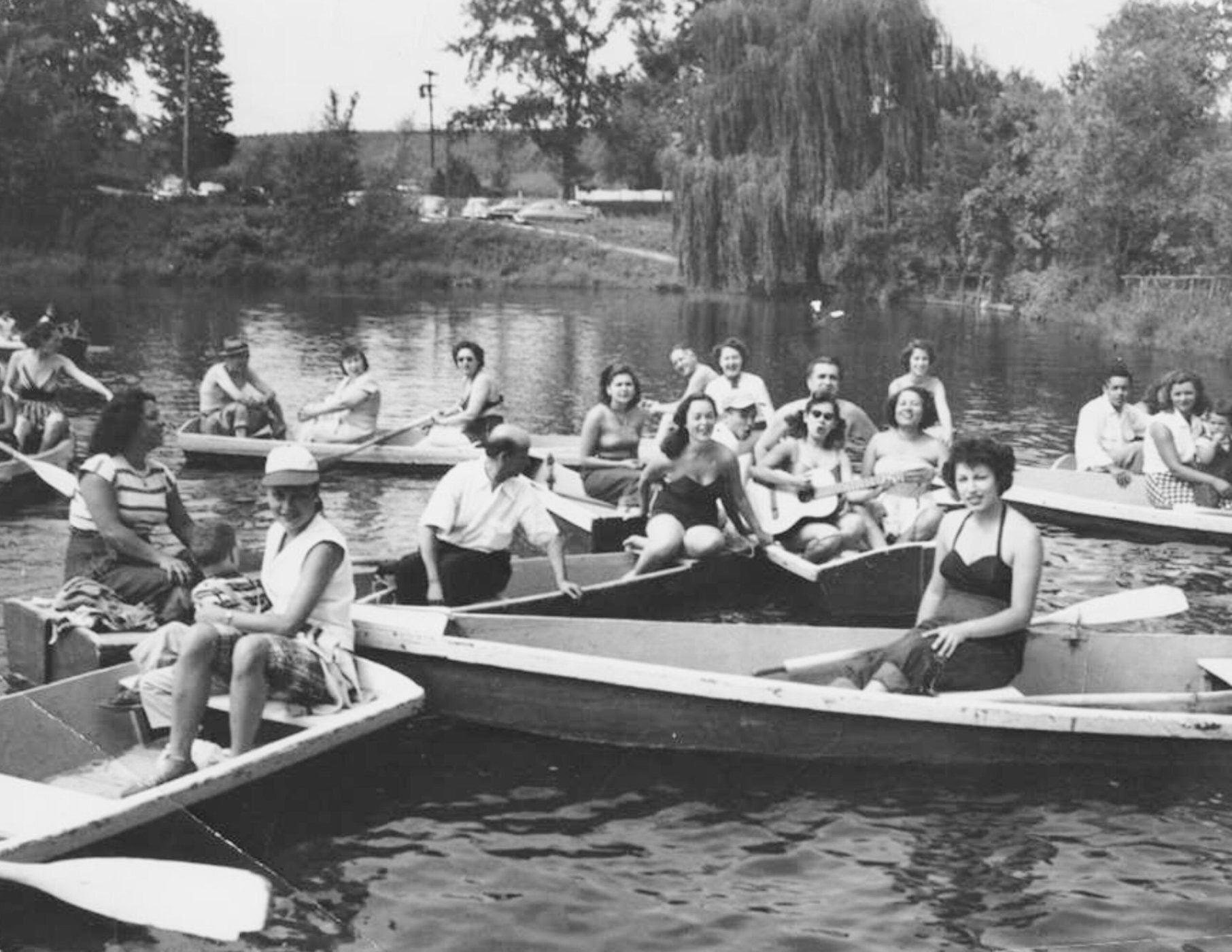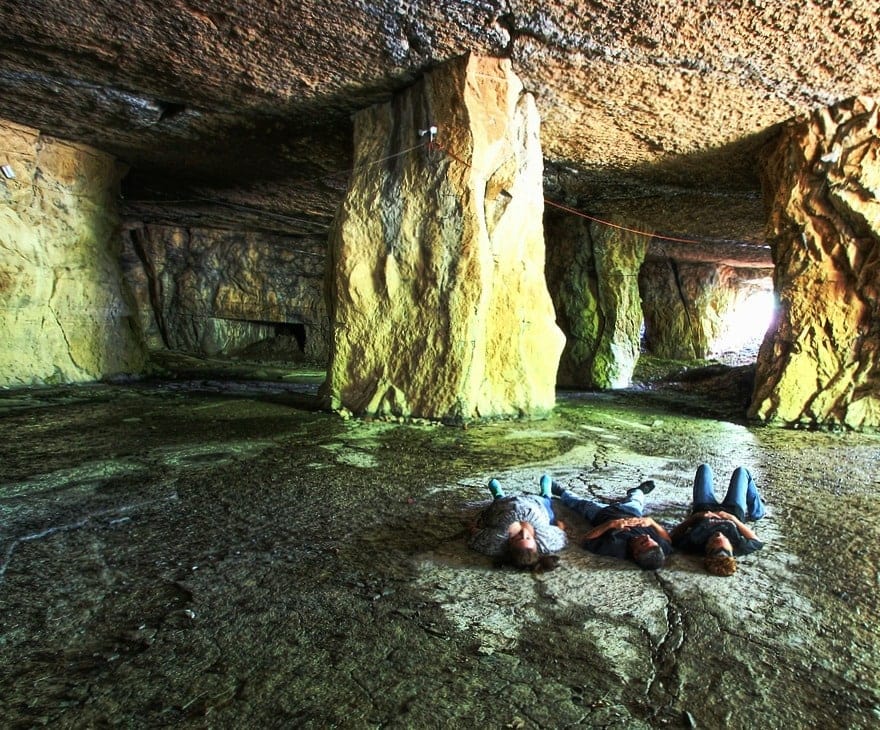Rocks possess a spirit, an energy that draws people. They are sacred beings … and they carry the weight of cultural memory in their very molecular bonds.
— David Belardes (1947-2015), chief of the Juaneño Band of Mission Indians, Acjachemen Nation (Calif.)
Today, Overlook Mountain in Woodstock is one of the Hudson Valley’s top hiking destinations thanks to spectacular views from the fire tower on its summit. Hundreds — maybe even thousands — of years ago, the mountain attracted people more for spiritual than recreational purposes.
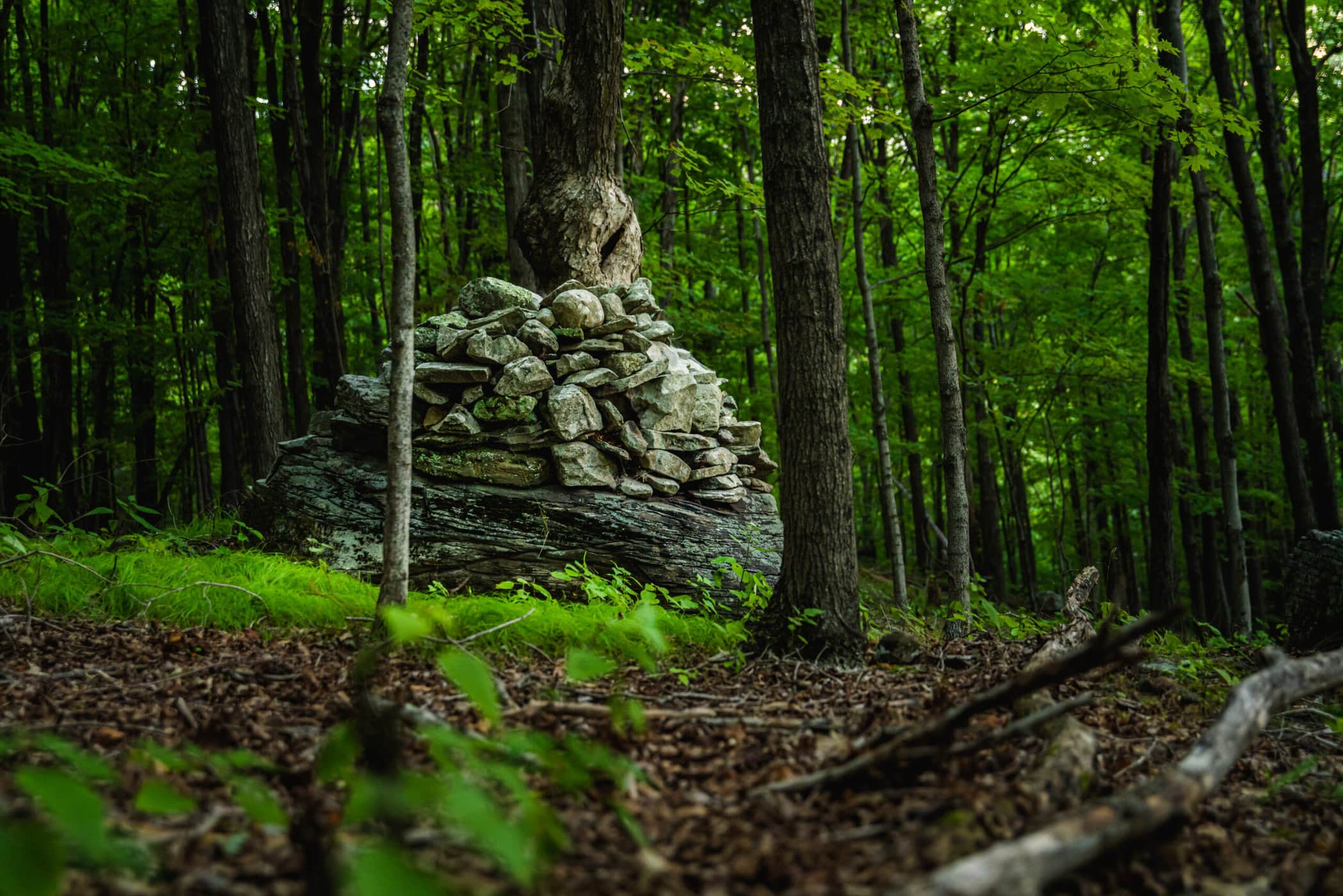
On its flanks sits what is traditionally called a ceremonial stone landscape. A ceremonial stone landscape is a series of intricately crafted structures — rock walls, piles, and cairns (Manitou Hassanash in the Algonquian language) — that Indigenous peoples and those committed to protecting the site consider a sacred space. They are an excellent example of what the United South and Eastern Tribes, Inc., a federation of more than two dozen federally recognized tribes, have named “prayers in stone,” constructed for their creators to connect with Mother Earth and the spirit world.
There are a number of ceremonial stone landscapes in the Catskills (including impressive ones on Halcott Mountain and Ashokan High Point) and elsewhere in the Hudson Valley. Like their counterparts along the East Coast, they invite controversy. Despite oral Indigenous traditions attesting to their origins, accounts from respected 17th-century diarists about their existence, and even mounting scientific evidence, many archaeologists, anthropologists, and historians staunchly refuse to acknowledge even the possibility that these works were constructed by Indigenous peoples. Instead, they attribute their creation to colonial farmers intent on clearing land for plowing.
What’s behind this reasoning? A perpetuation of the ignorance and intolerance of colonists who were “intent on denigrating the belief systems of the tribal people,” says Doug Harris, former deputy tribal historic preservation officer for the Narragansett Indian Tribe in New England and a leading advocate for preserving ceremonial stone landscapes. “The colonists could not accept that these ‘savages’ had a civilized belief system,” he says. “If they were not Christian, their beliefs were not valid.”
The lack of firsthand evidence about the purpose of ceremonial stone landscapes stems primarily from the fact that most Indigenous peoples refrained from sharing their spiritual beliefs with colonists. For good reason, says Lucianne Lavin, director of research and collections at the Institute for American Indian Studies in Washington, Conn. In a virtual presentation in March about the stone structures, she noted that “Native people at that time were loath to tell the English, and whites in general, anything about their spirituality because there was so much discrimination against Native religious behavior.”
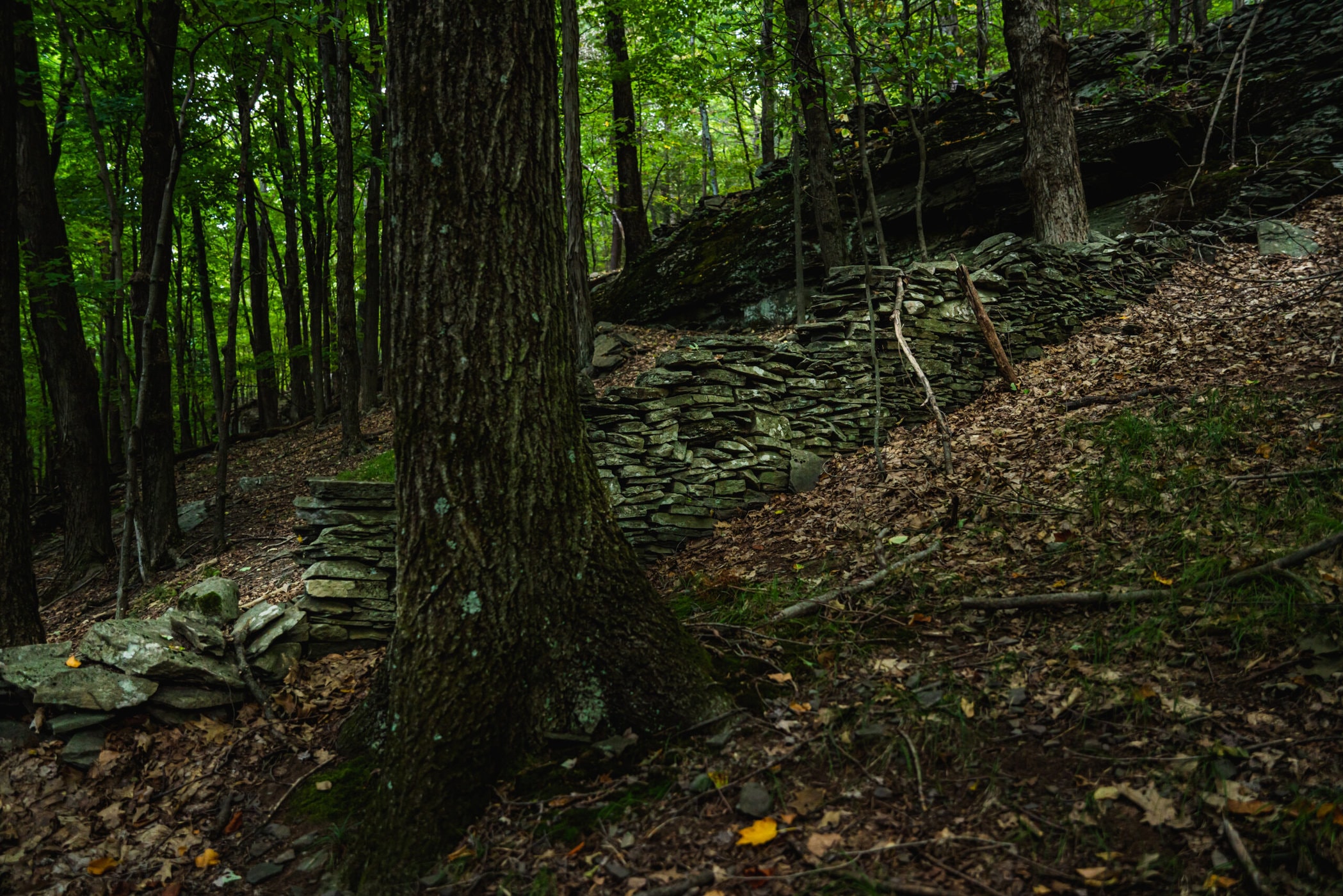
As far as Harris is concerned, it’s time to end the debate. “We need to acknowledge they exist and ask the question why they exist,” he says.
Clearly meant to last
The stone structures at Overlook Mountain highlight some of the factors weighing in favor of the Indigenous origin of ceremonial stone landscapes.
First, the steeply sloping location is hardly conducive to farming. This jibes with research conducted by Curtiss Hoffman, professor emeritus of anthropology at Bridgewater State University in Massachusetts. Of 5,500 Native American stone structures he surveyed from Canada to South Carolina, Hoffman found that almost 60% are located on land that is either infertile or has low fertility. “This suggests that whatever is going on has nothing to do with agriculture,” he says.
Second, Overlook Mountain’s ceremonial stone landscape — including six large Manitou Hassanash and two long, sinuous walls resembling serpents — were not constructed haphazardly, like piles of rocks dumped by farmers eager to start planting. They were clearly meant to last. “This took some group of people a lot of time and energy,” says Glenn Kreisberg, chair of the Overlook Mountain Center, established 10 years ago to protect the site and make it available for research.
Those in the farmer-creation camp point to the lack of archaeological evidence around ceremonial stone landscapes. But that’s not surprising at sites that hold deep spiritual significance to their creators, says Lavin. “It’s like going to church or temple. You don’t leave artifacts on the pew. You take them with you.”
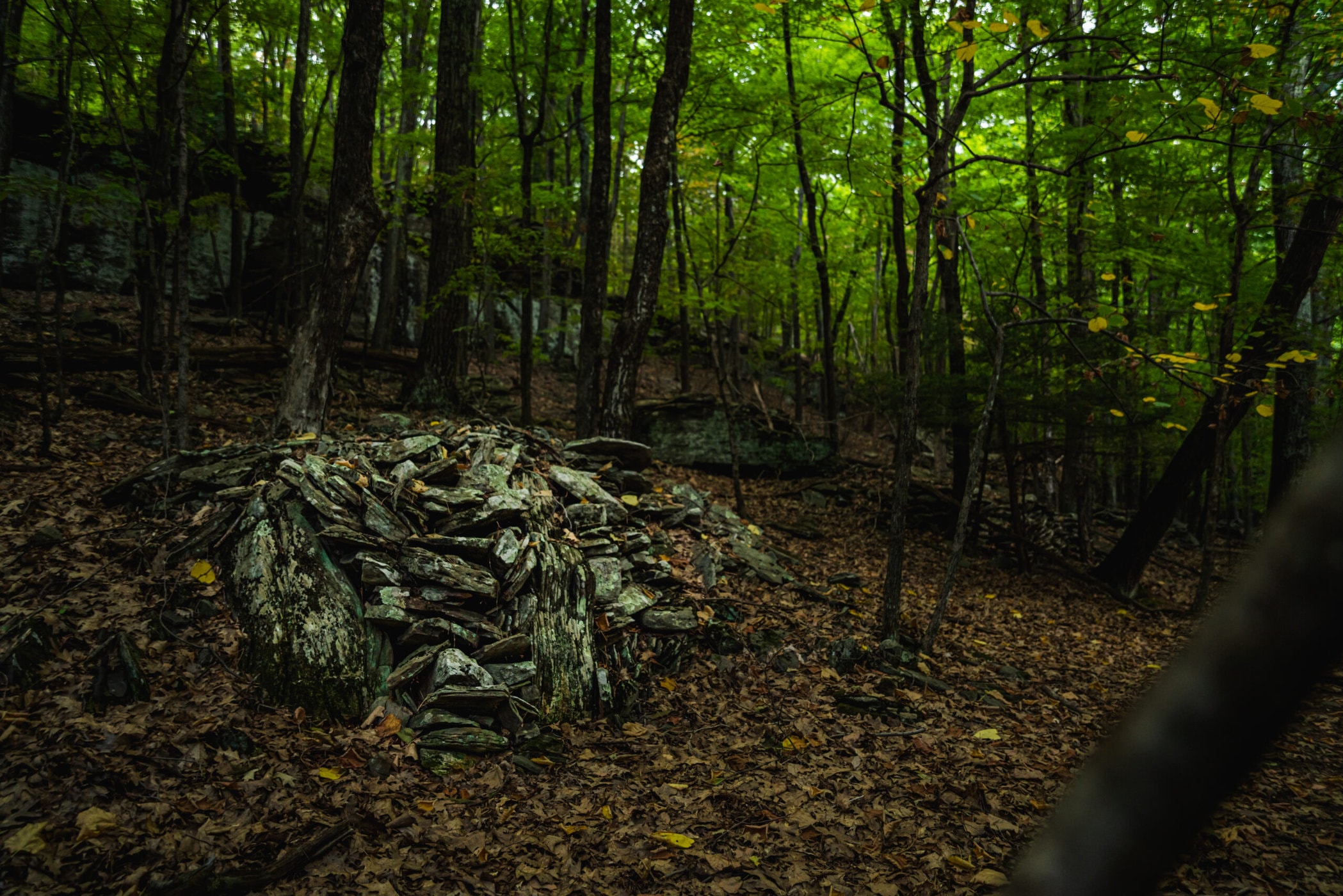
An intimate connection to nature
Research at Overlook Mountain also has revealed some fascinating clues about the structures — seemingly too many to be mere coincidence. Kreisberg discovered that when mapped, the site’s major stone features bear a remarkable “reflection” of the constellation Draco as an observer on this land would see it around the winter solstice. “It was so close, I was dumbfounded,” he says of the resemblance.
Kreisberg hypothesizes that this heavenly reflection, along with a nearby series of 13 stone piles that could provide a way of marking the cycle of the moon (which circles the Earth 13 times a year), “could have been used to track time.” Meanwhile, the two undulating “serpent” walls have been found to align with a stream’s headwaters, similar to the location of other ceremonial stone landscapes.
All of these features could provide a way for their creators to practice a belief system closely tied to the Earth. “Indigenous peoples had a very intimate connection to nature that we no longer have,” notes Kreisberg.
Perhaps most revealing is the conclusion of researchers from the University of Washington who undertook a sophisticated, yearlong process known as Optically Stimulated Luminescence to determine the last time light penetrated beneath a couple of the stone features on the mountain. In both instances, the results indicated dates prior to European contact, one in the 1300s.
Letting the landscape speak for itself
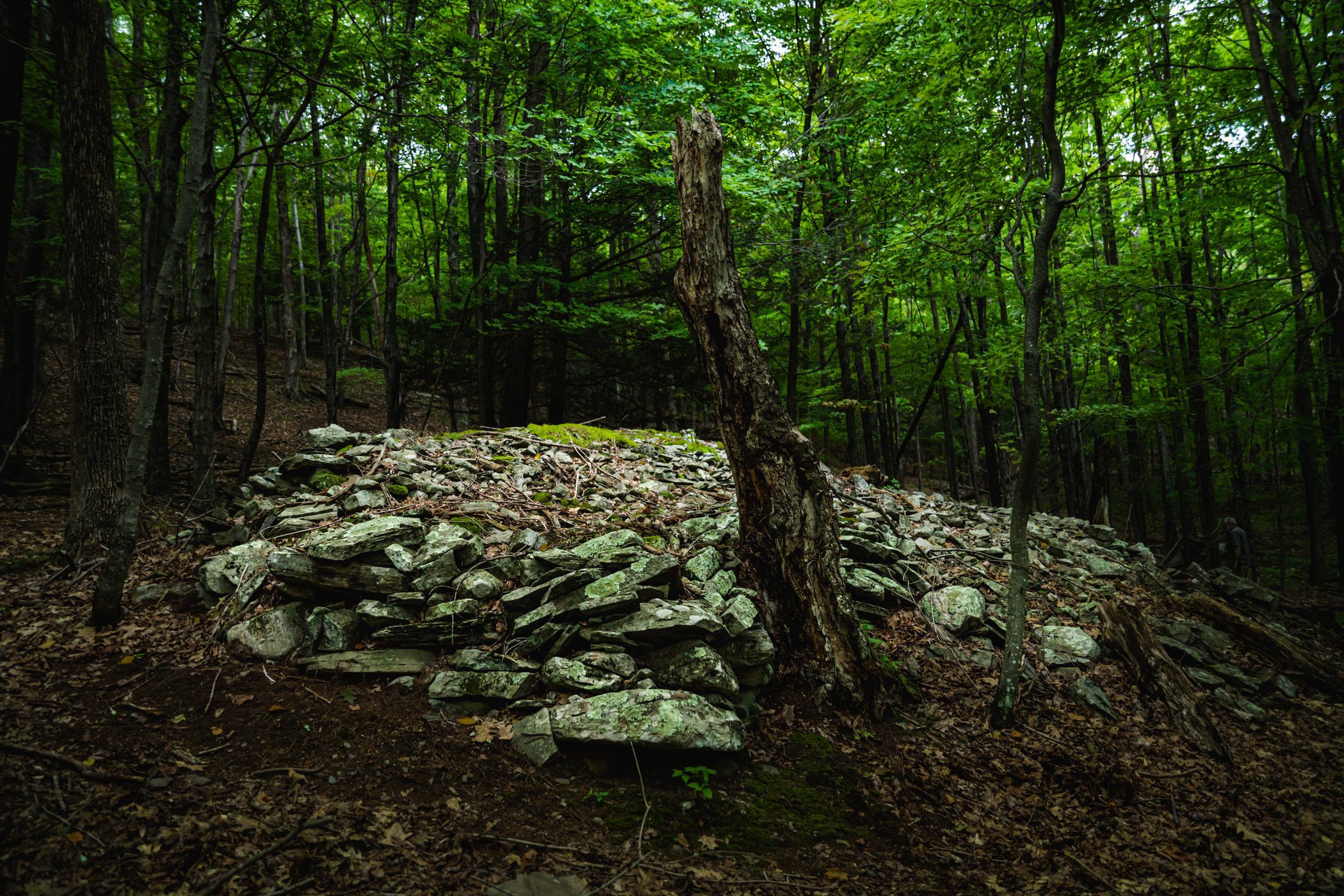
Ultimately, Indigenous peoples hold the key to the meaning of ceremonial stone landscapes. When Doug Harris visited Overlook Mountain, he says he was “awestruck.” As for its purpose, he abides by a rule of thumb offered him by a Narragansett medicine man: “Let the landscape speak for itself. And let the tribal oral history and lore stand as its witness.”
Tillman agrees: “It’s up to the Native people to come forward, if they will, to explain what these are for — and they may not. It’s their beliefs, and their beliefs have been trampled on for the last 350 years.”
In 2007, the United South and Eastern Tribes drafted a resolution confirming the Indigenous creation of ceremonial stone landscapes, affirming their continued importance to Native peoples, and recognizing the threat development poses to them. It continues working with federal agencies and communities to secure the structures’ protection and listing on the National Register of Historic Places.
Doug Harris says the key to preserving these “prayers in stone” is continuing to overcome the ingrained ignorance about their origins. “The only way you can protect what is there is to know what is there,” he says. “Let truth be your boss.”
The Overlook Mountain Center conducts regular tours of the ceremonial stone landscapes on its property and others in the Catskills. Check its website for future dates.
Reed Sparling is a staff writer and historian at Scenic Hudson. He is the former editor of Hudson Valley Magazine, and currently co-edits the Hudson River Valley Review, a scholarly journal published by the Hudson River Valley Institute at Marist College.


